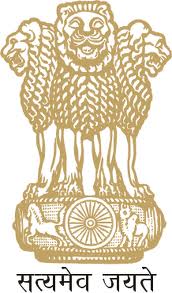 As per the Provisional Estimates released by CSO on 31st May, 2013 this sector is estimated to grow at 1.9% in 2012-13 at 2004-05 prices and the contribution of agriculture to the GDP is likely to decline to 13.7 % in 2012-13. The decline in growth rate and contribution of agriculture to GDP is on account of structural changes due to a shift from a traditional agrarian economy to a service dominated one.
As per the Provisional Estimates released by CSO on 31st May, 2013 this sector is estimated to grow at 1.9% in 2012-13 at 2004-05 prices and the contribution of agriculture to the GDP is likely to decline to 13.7 % in 2012-13. The decline in growth rate and contribution of agriculture to GDP is on account of structural changes due to a shift from a traditional agrarian economy to a service dominated one.
In order to bring reforms in agricultural marketing, the Ministry framed a model APMC Act in 2003 and circulated to States/UTs for adoption. Government has also been pursuing with the States/UTs to undertake amendments to their APMC Acts to inter alia provide for direct marketing, contract farming, farmers/consumers markets, setting up of markets in private/cooperative sector and e-trading so as to provide alternative competitive marketing channels to farmers and bring in more transparency in the marketing system. Overall, these initiatives have been successful in ensuring a better deal for farmers as witnessed by rising production levels, yields and incomes.
Government has launched several schemes to increase the growth rate of agriculture and boost farm production in terms of its contribution to the GDP such as Rashtriya Krishi Vikas Yojana (RKVY), National Food Security Mission (NFSM), Development and Strengthening of Infrastructure facilities for Production and Distribution of Quality Seed, National Horticulture Mission(NHM), Rainfed Area Development Programme (RADP), Integrated Scheme of Oilseeds, Pulses, Oil Palm and Maize (ISOPOM), Gramin Bhandaran Yojana etc. In addition, Government has substantially improved the availability of farm credit; implemented a massive programme of debt waiver; introduced better crop insurance schemes; increased Minimum Support Price (MSP), improved marketing infrastructure, etc.
This information was given by Shri Tariq Anwar, Minister of State for Agriculture and Food Processing Industries in written reply to a question in the Lok Sabha today.
